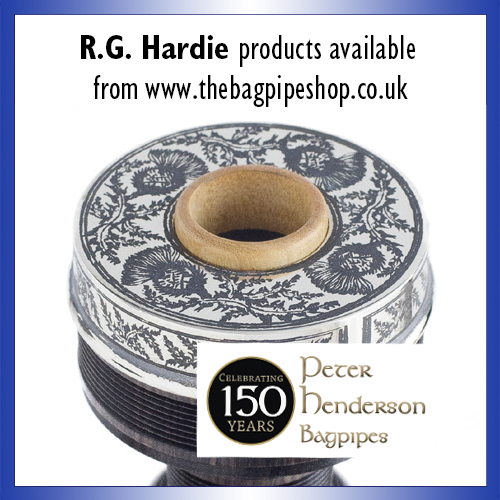The Literature of the Highland Bagpipe
The works of Angus MacKay (Raasay)
Conclusion – Ceòl Beag
By Captain John A. MacLellan.
In addition to his tremendous contribution to the art of ceòl mòr, Angus MacKay also made a worthwhile addition to what was at that time a meagre stock of ceòl beag productions. Available only were the books of Donald MacDonald (1828) and William Mackay (1841).
In 1843, Alexander Glen published Angus MacKay’s – The Piper’s Assistant. This book like all the early books of ceòl beag is but half the size in length of the modern music books, but roughly the same breadth. The preface presents a precis on the Great Highland Bagpipe, as well as some information about the use of the instrument in the army and that the Duke of Cumberland observed that the clans had their pipers with them at Culloden. Furthermore, MacKay writes in the preface of the place the piper had within the clan hierarchy.
There is also an interesting chapter that details the badges and tartans of the main clans.
The index is in Gaelic and in English and there follows two and a half pages of explanation on note values and their position in the stave. The fingering to be used on the Practice chanter is shown by the indication of black dots for closed holes and open holes for open notes. Before the collection of tunes there is a page of exercises containing some examples still in use today. An example of ceòl beag notation as used by Angus MacKay is reproduced below. — (Fig. 1):

There is nothing in the book that resembles competition music as played in present times.
THE TUTOR FOR THE HIGHLAND BAGPIPE by William MacKay 1841, was in 1843 corrected and improved by Angus MacKay. In many details there are similarities between this revision by Angus MacKay and Angus MacKay’s “Piper’s Assistant’. There is no preface but there is a contents list in both Gaelic and English, which is followed by identical “INSTRUCTIONS” to that in the Piper’s Assistant; the “EXERCISES” are also obviously printed from the same plates, Indeed many of the tunes have been duplicated in the “Piper’s Assistant” but have been printed from new plates.
Finally, the book is concluded with a “SUPPLEMENT OF BAGPIPE TUTOR” which gives the well-known exercise GABG, ABCA, BCDB etc. In addition there are four pages of various gracenotes combinations that include some Piobaireachd embellishments, an example of which is shown below. (Fig. 2):

The supplement ends with, “BLOWING THE BAGPIPES” which with all due deference to the MacKays, William and Angus, would appear to get any beginner into a real fankle, while the “DIRECTIONS FOR KEEPING THE BAG TIGHT” would induce in a modern bagpipe teacher an attack of apoplexy. These instructions are reproduced below.
Study of the notation in the examples above shows that in the earlier part of the 19th century there is a considerable difference to standards at the latter part of the 20th, particularly as far as embellishments are concerned. Little use is made of “dotting and cutting’, especially so in the “Piper’s Assistant’ where many of the time groups are completely unpointed.
An interesting comparison between MacKay’s and Donald MacDonald’s ceòl beag notation is the ‘Thrown on D’. MacDonald does not really use this embellishment at all, embellishing ‘D’ when required with a shake:

The ‘Throw on D’ written as follows:

is reserved entirely for his book and manuscript of Piobaireachd.
Angus MacKay on the other hand uses the version normally printed today throughout his ceòl mòr and ceòl beag collections e.g.:

While Angus MacKay’s ceòl beag productions are certainly not of the magnitude of his published book and manuscripts of ceòl mòr, it might be fair to surmise that the playing of ceòl beag did not interest pipers who have risen to the top of their profession — hence the concentration in Angus’ work on Piobaireachd, It must also be remembered that he, along with others, was responsible for the advent of competition type music. Obviously, playing the little music, mostly folk airs, had little appeal to their musical intellect. What is remarkable in all Angus MacKay’s works is, that it is difficult to find any examples of Gaelic slow airs, which makes one wonder if at that time, was it the custom to play such music on the bagpipe? It will be interesting to note when such music begins to appear in print.
Although Angus MacKay was married and had a family it appears that he did not pass on the piper’s art to any of his children. If he did, nothing of note came of it. Thus, when he died in 1859 the greatness of the MacKay’s of Raasay practically died with him, only his nephew Donald, who was taught by Donald Cameron, a pupil of Angus’, being left to carry on the family piping traditions which were so firmly linked with the great MacCrimmon pipers of earlier times. Had it not been for Angus MacKay’s industry in recording his family’s music, piping today would certainly be very much the poorer.
* From the April 1980 International Piper.


